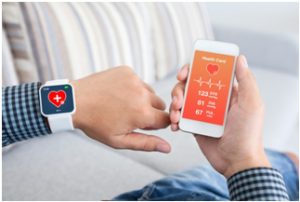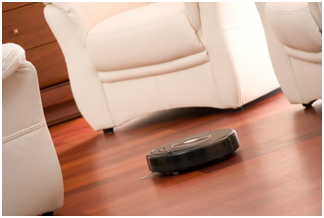 Most senior citizens want to keep living independently in their own homes for as long as possible. Thanks to modern advances in technology, “as long as possible” has gotten a lot longer. Seniors — and others with chronic conditions who need help with the activities of daily living — can now stay in their own homes much longer than has ever been viable before.
Most senior citizens want to keep living independently in their own homes for as long as possible. Thanks to modern advances in technology, “as long as possible” has gotten a lot longer. Seniors — and others with chronic conditions who need help with the activities of daily living — can now stay in their own homes much longer than has ever been viable before.
Nearly 40 percent of Americans 65 or older have a disability, but only 3.1 percent of Americans over 65 live in a residential nursing facility. Staying at home is often a much more cost-effective means of caring for an elderly parent or other incapacitated person, and most people want their loved ones nearby. Technology like cleaning robots, sensors that can help monitor health, home care software, telemedicine services, and even social media are helping more and more senior citizens maintain their independence.
1. Sensor Technology
Sensors are already widely used in health and fitness tech designed with younger consumers in mind. The same technology that allows a FitBit to track the wearer’s calorie consumption throughout the day can help elder care professionals keep aging patients in their own homes. These sensors can be worn by the patient, placed in appliances, or distributed throughout the home to help home health care professionals keep track of things like whether a patient has eaten or taken medication, whether he or she has failed to get out of bed in the morning, whether he or she has wandered out of the house, or whether he or she has left tap running. Devices like the Lively Safety Watch are not only attractive to wear, they also allow the wearer to call for help, set alerts that summon loved ones in case of an emergency, or share their daily activities with someone else.
2. Cleaning Robots
 Home health aides can help senior citizens with a variety of daily tasks, including preparing meals and doing housework. But cleaning robots can ease some of the burden for home care workers or loved ones. These days, you can get robots that vacuum and mop the floors, clean the pool, and even mow the lawn. For those with hearing impairments, mobile devices are available that translate sounds, like that of the doorbell, to flashing lights on a smartphone, alerting the hard-of-hearing user that someone is at the door.
Home health aides can help senior citizens with a variety of daily tasks, including preparing meals and doing housework. But cleaning robots can ease some of the burden for home care workers or loved ones. These days, you can get robots that vacuum and mop the floors, clean the pool, and even mow the lawn. For those with hearing impairments, mobile devices are available that translate sounds, like that of the doorbell, to flashing lights on a smartphone, alerting the hard-of-hearing user that someone is at the door.
3. Home Care Software
It’s not always easy to juggle the needs of an elderly patient, especially when that person has multiple caregivers or complex needs, or both. Home care software can help caregivers keep track of a patient’s needs, ensuring that he or she gets the right medications at the correct time and has his or her needs met even when multiple people are coordinating their care-giving efforts. With the help of remote monitoring tools, this software can even alert caregivers and physicians to emerging health problems, emergencies, or simply areas in which care could be improved.
4. Telemedicine
For many senior citizens, getting to the doctor’s office isn’t easy. Many are no longer able to drive, and even if there’s a caregiver available to do the driving, traveling to a doctor’s office can be a big hassle when your mobility is limited. That’s to say nothing of the anxiety many seniors feel about visiting the doctor’s office.
Telemedicine can remove some of the hassle of seeing a doctor for regular checkups and minor complaints. Video conferencing technology can allow seniors to check in with their doctors from home, and even receive treatment for minor ailments.
5. Social Media
Sure, plenty of seniors are on Facebook these days, but that’s not the only option for aging patients who want to stay in touch with friends and loved ones. There are several social media networks specifically designed to help the elderly and disabled stay in touch with those who mean the most to them, or even help them make new friends in their own age group. These include AARP Community, SeniorMaze, Cool Grandma, and Family Crossings.
Technology is making life easier for everyone, and that includes senior citizens. Thanks to home health care software, telemedicine, and other technologies, most senior citizens can remain the comfort of their own homes, living independently, with a little less help from home health care aides and loved ones.










Comments